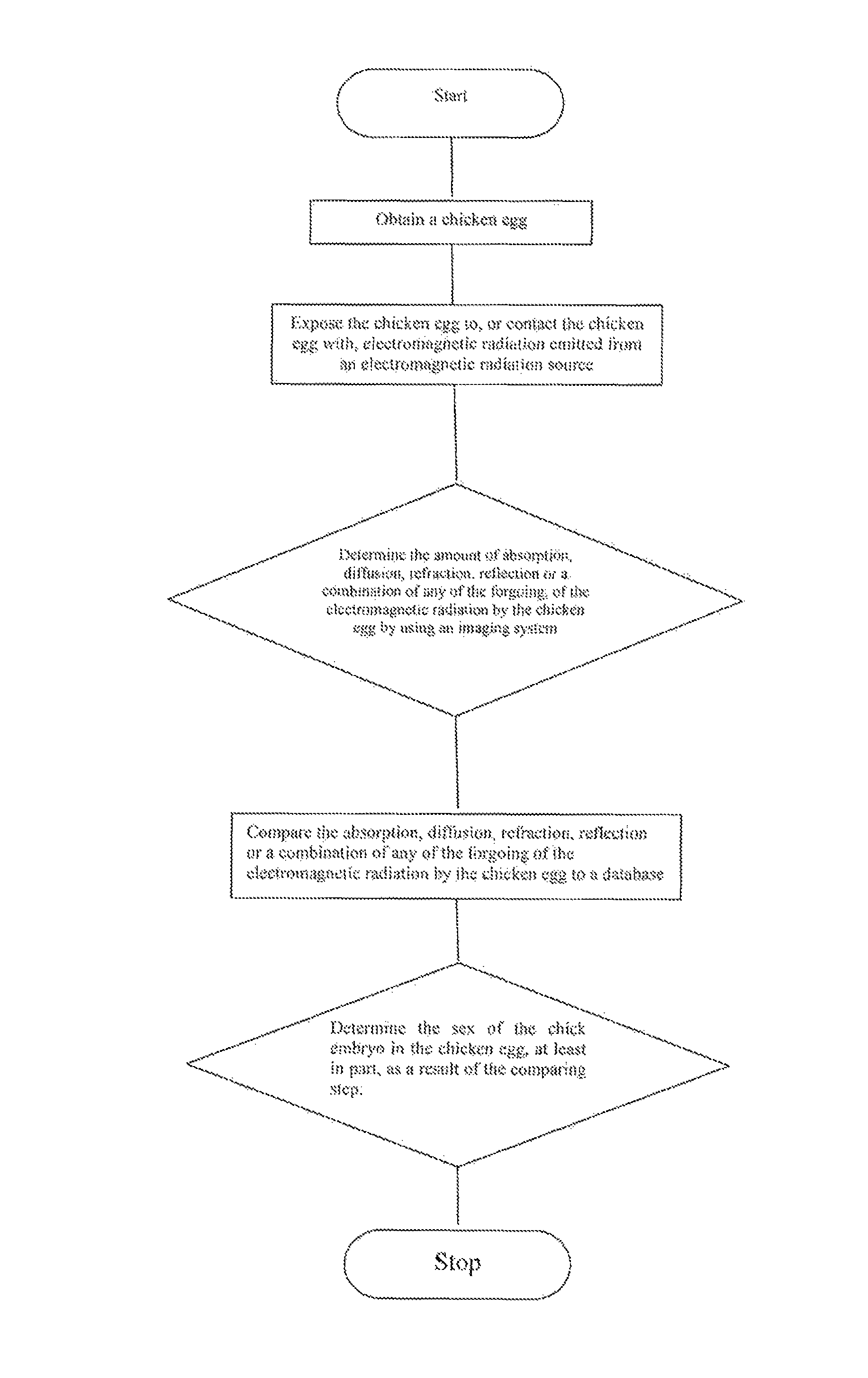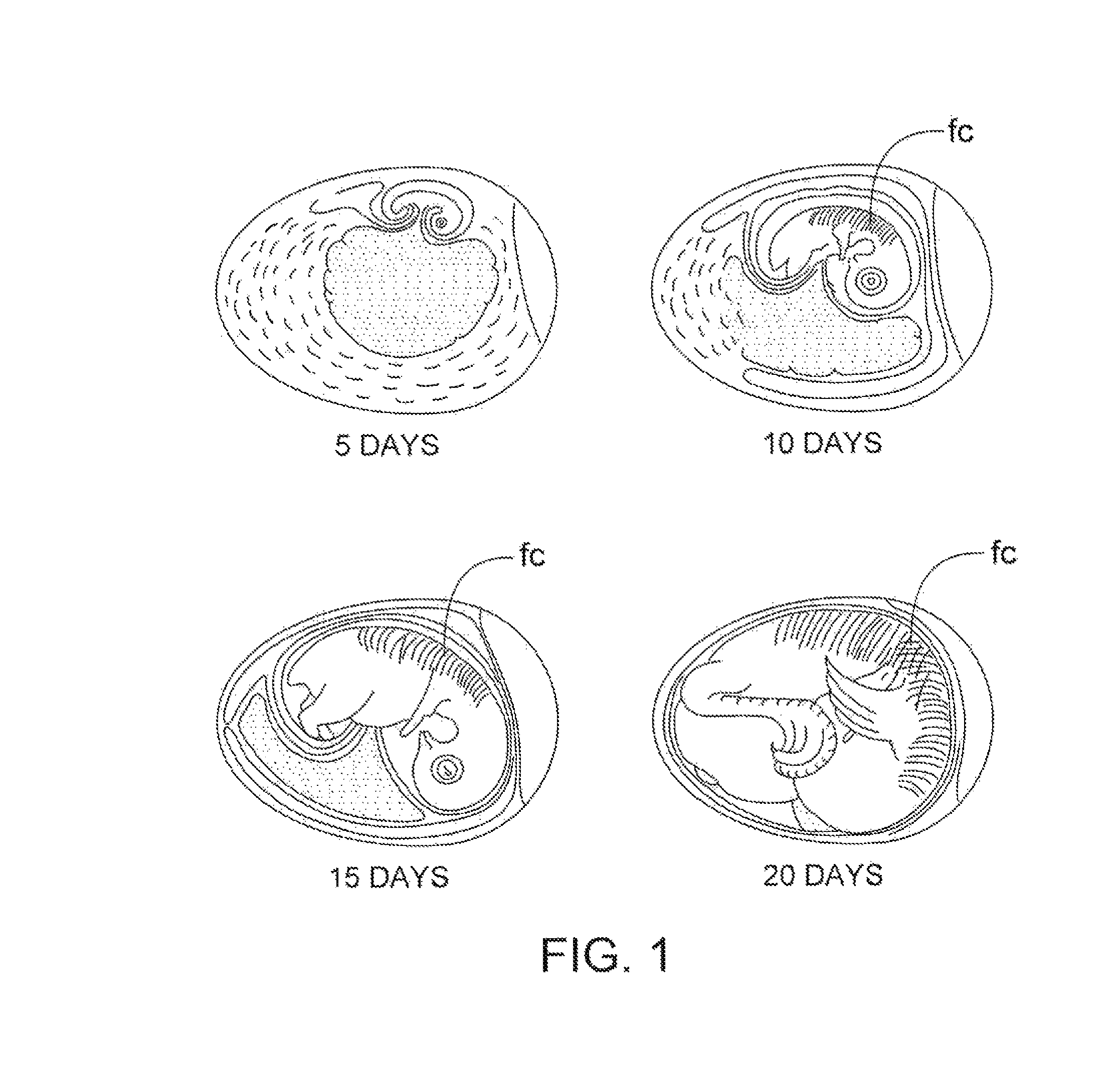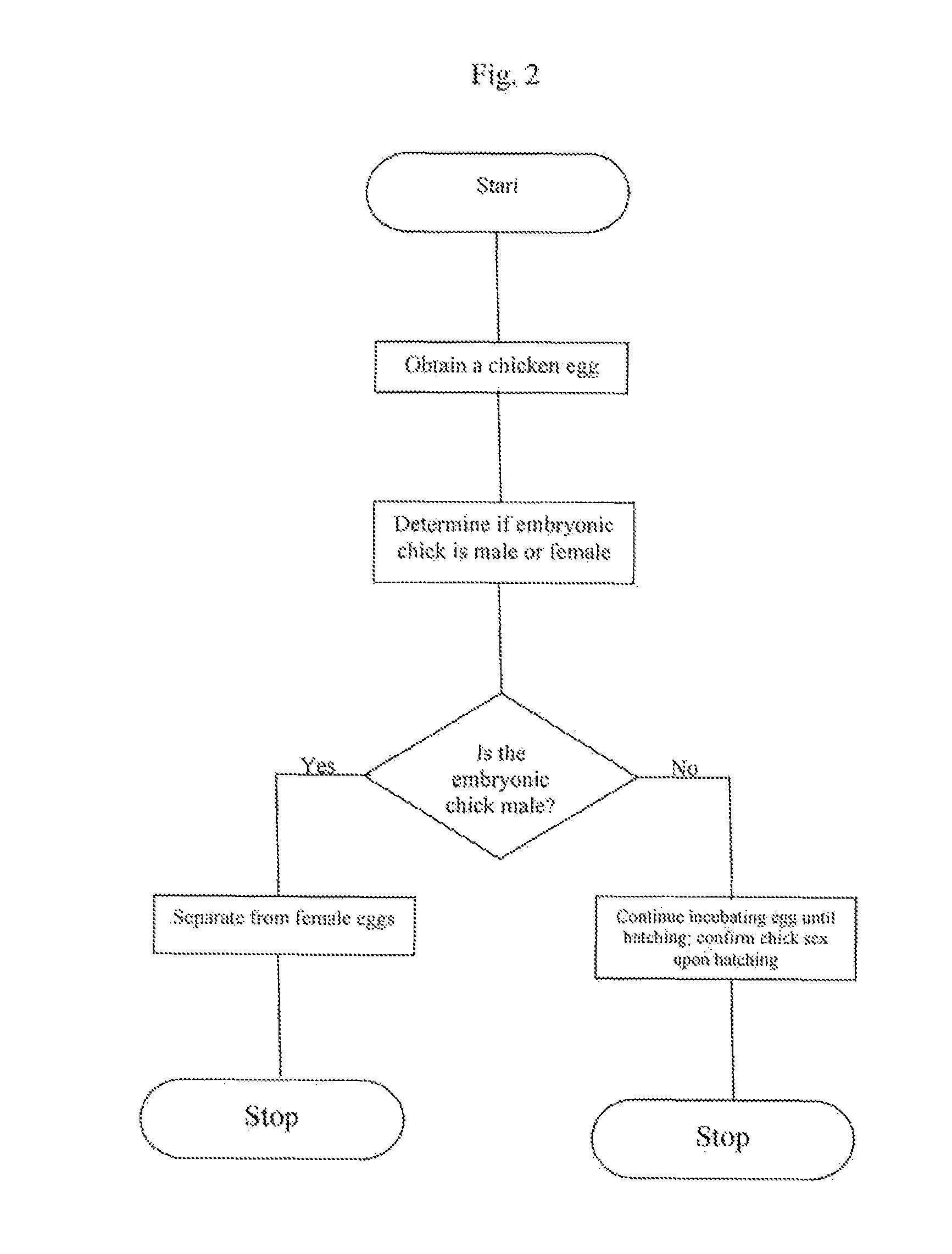Spectrophotometric analysis of embryonic chick feather color
a spectrophotometric and embryonic technology, applied in the field of spectrophotometric analysis of embryonic chick feather color, can solve the problems of large-scale laborious culling of male chicks, and undesirable to industry consumers and the general publi
- Summary
- Abstract
- Description
- Claims
- Application Information
AI Technical Summary
Benefits of technology
Problems solved by technology
Method used
Image
Examples
Embodiment Construction
A. Definitions
[0016]With reference to the use of the word(s) “comprise” or “comprises” or “comprising” in the following description and claims, unless the context requires otherwise, those words are used on the basis and clear understanding that they are to be interpreted inclusively, rather than exclusively, and that each of those words is to be so interpreted.
[0017]The term “about” as used herein refers to a value that may vary within the range of expected error inherent in typical measurement techniques known in the art.
[0018]The term “storage device” as used herein refers to a machine-readable device that retains data that can be read by mechanical, optical, or electronic means, for example by a computer. Such devices are sometimes referred to as “memory,” although as used herein a machine-readable data storage device cannot comprise a human mind, in whole or in part, including human memory. A storage device may be classified as primary, secondary, tertiary, or off-line storage....
PUM
| Property | Measurement | Unit |
|---|---|---|
| wavelengths | aaaaa | aaaaa |
| wavelengths | aaaaa | aaaaa |
| period of time | aaaaa | aaaaa |
Abstract
Description
Claims
Application Information
 Login to View More
Login to View More - R&D
- Intellectual Property
- Life Sciences
- Materials
- Tech Scout
- Unparalleled Data Quality
- Higher Quality Content
- 60% Fewer Hallucinations
Browse by: Latest US Patents, China's latest patents, Technical Efficacy Thesaurus, Application Domain, Technology Topic, Popular Technical Reports.
© 2025 PatSnap. All rights reserved.Legal|Privacy policy|Modern Slavery Act Transparency Statement|Sitemap|About US| Contact US: help@patsnap.com



